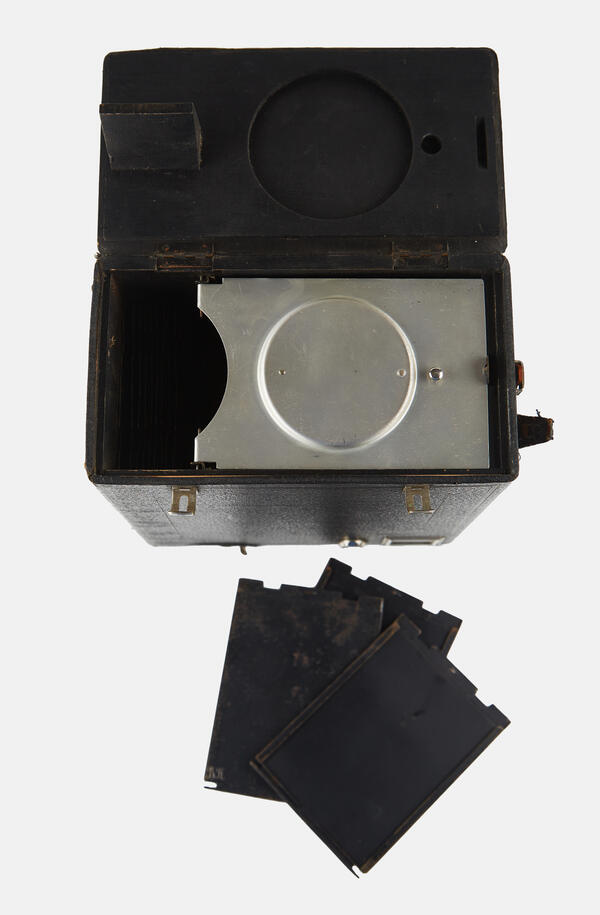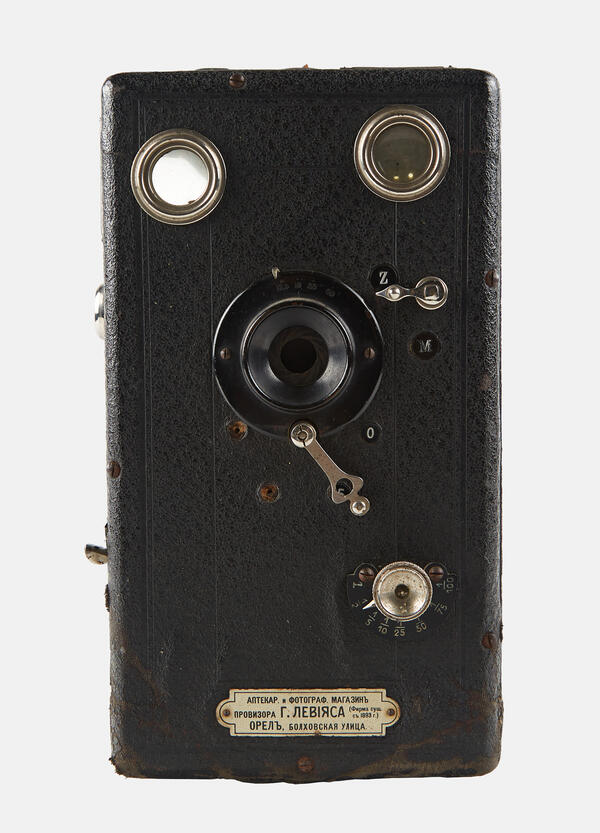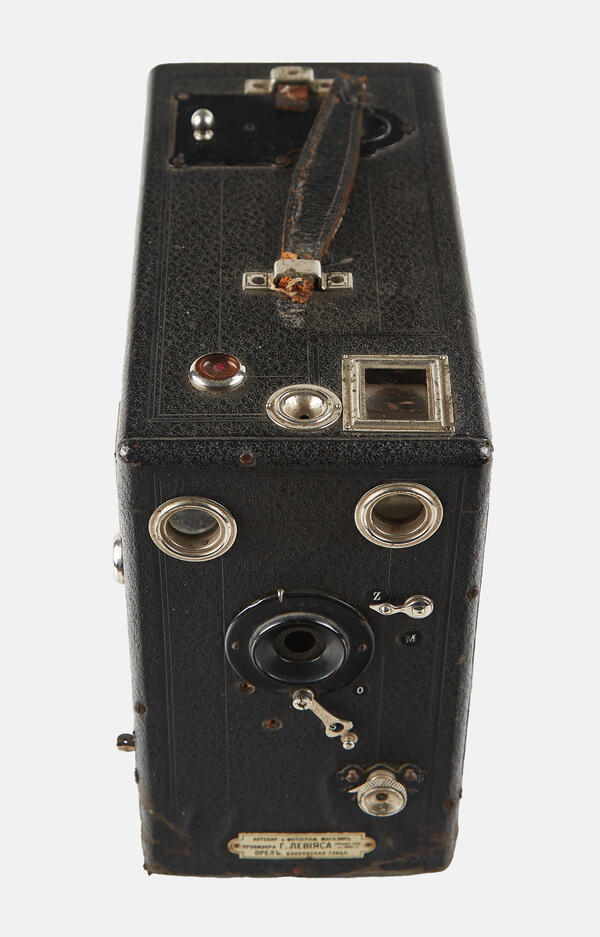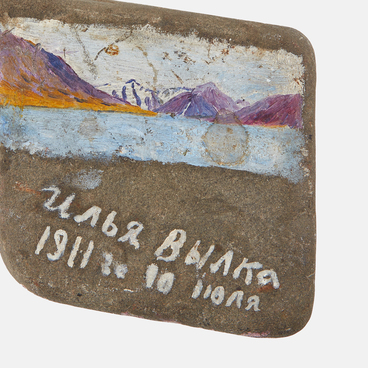The Rusanov House Museum presents a Kodak camera produced in the early 20th century.
Back in 1860 John Herschel was allegedly the first to use the term “photography”. At the time all this looked ridiculous, amusing, and funny.
In 1878, George Eastman, an ordinary bank clerk from Rochester, who was going on vacation, decided to buy a modern camera to capture the views. But the trip never happened. The camera of those times was the size of a modern microwave and had a very heavy wooden tripod. This “wonderful” set also included a suitcase (which looked more like a chest) with test tubes, emulsion, plates, and a jug, as well as a tent that could be used as a darkroom for processing and drying photographs. All this cumbersome equipment shocked Eastman, and he spent his vacation thinking about how to simplify the photography process and make it user-friendly. After reading magazine articles about the experiments of his English colleagues, who used gelatin to prepare the photographic emulsion, Eastman came up with a dry emulsion that could be applied to the plates in advance. Witnessing the demand for his invention and understanding its prospects, Eastman continued his experiments and began looking for a different base for the emulsion that would be more flexible and lighter. Paper was the perfect match: it was coated with the emulsion, rolled up and put inside a film roll to be used in the camera.
The flexible film that went on
sale was far from popular. It became evident that to make photography truly
universal, the company needed to offer a more user-friendly camera. Shortly
afterwards (in 1886), such a camera was designed, patented, and introduced to
the public. It was a box camera for a standard roll holder that allowed for 48
4×5 inch exposures. It had a focusing lens and a shutter, which was the most
expensive and vulnerable part of the camera. It worked poorly and was soon
replaced with a more reliable and cheaper analogue. After making several
improvements, Eastman released the new amateur Kodak camera No. 1 in 1888. This
was a revolution in the photography industry and the amateur photography
community. Kodak cameras have changed not only what you do with a camera, but
also the life seen through the lens. From now on, one could take a lot of
shots, carry the camera for a long time, and record every step on the way.
Photographs began to feature smiles, everyday moments, joy, and plenty of
movement. With the advent of Kodak cameras, photography became entertainment.





